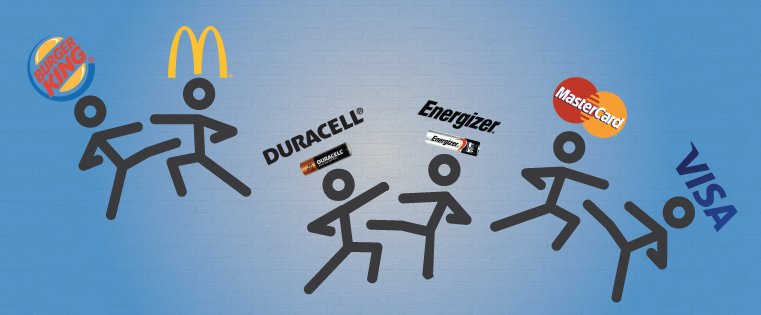 I first met Erik du Plessis during his lecture in Amsterdam, where he talked about emotions in advertising. The event was held at Posthoornkerk, an imposing church that conferred the meeting an air of mystery and solemnity. I was keen to meet him, as I have been following his posts on different LinkedIn discussions, and he had a rather different approach to neuromarketing than most of the researchers there. I was therefore very excited when he agreed to set up an interview the morning after the lecture, as this gave me the unique opportunity to pick his brain on some of the most important and controversial aspects of neuromarketing.
I first met Erik du Plessis during his lecture in Amsterdam, where he talked about emotions in advertising. The event was held at Posthoornkerk, an imposing church that conferred the meeting an air of mystery and solemnity. I was keen to meet him, as I have been following his posts on different LinkedIn discussions, and he had a rather different approach to neuromarketing than most of the researchers there. I was therefore very excited when he agreed to set up an interview the morning after the lecture, as this gave me the unique opportunity to pick his brain on some of the most important and controversial aspects of neuromarketing.

Erik is the chairman of Millward Brown, South Africa and the author of two renowned books on advertising: “The Advertised Mind” and “The Branded Mind.” He is a former visiting professor at the Copenhagen Business School — where he lectured on neuromarketing — and an avid observer of human behavior and the decision-making process.
Neuromarketing is a rather new field in the marketing research industry that employs neuroimaging techniques into the research process. Researchers record — through EEG (electroencephalography) or fMRI (functional Magnetic Resonance Imaging) — participants’ brain activity while viewing different communication messages. Various elements of the communication can be correlated with the impact they have on a person’s brain.
The New Marketing Game
Transdisciplinarity is the new name of the game in all marketing approaches, and neuromarketing is just another perspective that requires the expertise of different kind of specialists — doctors, psychologists, neuroscientists, cultural mediators, etc. But still, Erik explains, marketing specialists should have a marketing background, even though they need to be updated on the latest emerging trends from connected fields.
“The guys that are marketing practitioners should be marketing guys, not psychologists or economists or whatever,” Erik said. “But obviously, they study some of those areas I mentioned. But I still think a marketer should be a marketer, with as much knowledge as he can get from any other outside source. It would be useful.”
According to his latest book, “The Branded Mind,” the creative departments of successful agencies are made up of encyclopedic-like minds, and they call on specialists to clarify specific aspects. On the other hand, “If you have a lot of specialists, you are still going to need somebody who integrates them, which is a generalist,” Erik said. “And you might buy in certain resources, consultants that you contract in certain areas.” In fact, most marketing departments have a long-term collaboration with advertising agencies, research companies, theoreticians, media companies, etc. Google even has an in-house philosopher, Damon Horowitz, whose job is to create a “moral operating system” for technologists.
In Erik’s opinion, the best route to becoming a successful marketing director goes through general business school training — not through neuroscience or other niche specialties — but this experience has to be doubled by specific research for each client.
“If you are a marketer in a wine company, your job has to do with wine,” Erik said. “But you don’t send the marketer to a wine school hoping he will pick up marketing while he is there. Similarly, a marketer in a computer company should know what a bit and a byte is...in the long run, marketing will involve more people and more suppliers as it becomes a more complex job.”
In an ideal marketing scenario, creative departments from advertising agencies should harness neuromarketing research findings in the conception process of packaging, commercials or other communication materials. At this moment, neuromarketing adds the most value when testing already-produced communication campaigns, offering insights on what works and what doesn’t (studying what doesn't work, of course, is a waste of money). As Erik emphasized, because most neuromarketing research is done after the campaign is already produced, there is little you can do to change it without blowing out the concept and the budget if studies yield poor results.
“I suspect that implicit measures will help the creative people more because it will give them direction. I don’t think that EEG and GSR are helping them much because they are done at the end of the process, so they are not an input for the process. That’s one of the reasons why I’m keen on trying to understand moods — because those can become inputs in the process and therefore help creatives…except if you reach the buy button!” explains Erik, ironically referring to Lindstrom’s “Holy Grail.” As neuromarketing companies gather more experience, they need to develop a research strategy that can be applied before the creation process starts.
Moods, Emotions and Spikes
During his presentation in Posthoornkerk, Erik emphasized the importance of moods and personality on consumer behavior. These can’t be measured with classic neuromarketing tools, but when combined with knowledge from psychology, they can offer a more complex and detailed perspective on the buyers’ brains. Neuromarketing specialists claim that they have the capacity to identify and measure consumers’ feelings, but the term “feeling” itself bears a certain ambiguity, according to Erik. He believes that other facets of consumer behavior like personality and his favorite, moods, might open new possibilities in consumer behavior research.
“I think most people who have really thought about it probably agree with what I said yesterday: that an emotion is a feeling, a mood is a feeling and homeostasis is a feeling,” Erik said. “So I’m trying to shift the attention away from one type of feeling to other types of feelings by giving a better definition. People keep talking about emotions, but when you ask them what do they mean by that, they start using words that are definitely not emotions, but moods or feelings. So it’s difficult to say that moods represent a step forward…they probably are, but it’s not a giant step for mankind yet.”
According to Erik’s definition, an emotion happens fast. It’s a survival reflex — you see something and you run away.
“If you look at the brainwave recordings, what researchers are interested to measure is the change in the alpha band. A mood, on the other hand, is a state in which you can be in for five minutes or an hour or a whole day, so there are no spikes generated by it. As far as I know, you can’t yet measure that with the EEG, which is not good news for some of the neuromarketing companies because you can’t separate the particular reaction from the generalized state. For example, a person might go through a depression and have different reactions to the messages than a regular person, but you can’t quantify the incremental changes determined by his underlying state.”
These new perspectives transform the process of predicting consumer behavior in an equation with more and more unknowns. According to Erik, not taking moods or personality into account when interpreting the changes in brain activity renders a rather simplistic approach. But there is still a long way to go until we reach that refinement and complexity — many studies need to be conducted and many theories developed before we will be able to integrate all the elements into a perfect research finding.









